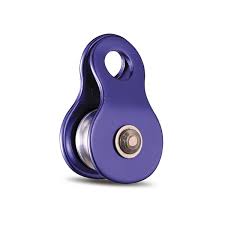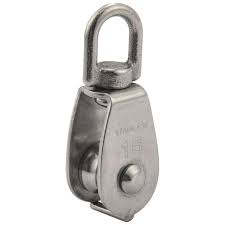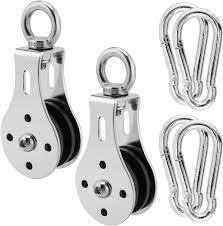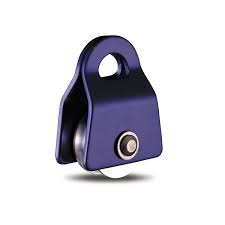Product Description
| Item No. | as shown in the picture |
| Material | steel/zinc/aluminum/plastic bracket + ball bearing/needle bearing wheel |
| Adjustable or not | the height of the roller is adjustable |
| Application | sliding door and window, binds, rolling shutters, furniture, conveyor belt, etc. |
| Normal packing | poly bag + outer carton |
About us
Our factory is specialized in manufacturing non-standard bearing, plastic and metal pulley, bracket pulley, roller, door and window fittings, etc. Relying on a series of advanced processing equipments, skilled workers, strict inspection system, and organized management, we are able to provide good-quality products with competitive price.
Why choose us
1. Professional experience: almost 20 years’ expenience in non-standard bearings, rollers, pulleys, and other plastic accessories for door and window.
2. Popular over the world: over 20 market countries.
3. Advantage: good quality with competitive price.
4. OEM offered: technical drawings, samples or photos are needed.
FAQ
Q: How to get a quotation and start business relationship with your company?
A: Please send us email and our sales representive will contact you as soon as we receive your email.
Q: How to receive a quotaion in the shortest time?
A: When you send us an enquiry, please try to provide more details, such as product size, photo or drawing, order quantity, etc.
Q: How to start an OEM project with your company?
A: Please send us your designed drawings or original samples so that we can offer a quotation first. If all details are confirmed, we will arrange sample production once received your deposit .
Q: What’s your MOQ?
A: The MOQ depends on the design and production processes of the products. Nomally our company MOQ is 10000pc , but it can be much more or less depending on different product types. Therefore, we recommend you to tell us your required quantity first.
Q:How long can I receive an order?
A: That depends on the specific items and your order quantity. The lead time varies from 30 to 90 days.
Product Categories
| For more information, please visit http://nbminli / |
/* January 22, 2571 19:08:37 */!function(){function s(e,r){var a,o={};try{e&&e.split(“,”).forEach(function(e,t){e&&(a=e.match(/(.*?):(.*)$/))&&1
| After-sales Service: | Online Technical Support |
|---|---|
| Material: | Metal |
| Type: | Ball Bearing |
| Frame Material: | Plastic, Steel, Aluminium, Zinc Alloy, etc. |
| Roller Material: | Steel |
| Splittable: | Splittable |
| Customization: |
Available
| Customized Request |
|---|
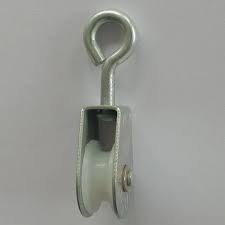
Can small pulleys be easily replaced or repaired in common appliances?
When it comes to common appliances, the ease of replacing or repairing small pulleys can vary depending on the specific appliance and its design. Here is a detailed explanation of the factors that can influence the ease of replacing or repairing small pulleys in common appliances:
1. Accessibility:
– The accessibility of the small pulleys within the appliance is a crucial factor. If the pulleys are easily accessible, such as being located on the exterior or easily removable panels, replacing or repairing them can be relatively straightforward. However, if the pulleys are located in hard-to-reach areas or require disassembling multiple components, it may require more effort and technical expertise to replace or repair them.
2. Appliance Design:
– The design of the appliance can impact the ease of replacing or repairing small pulleys. Some appliances are designed with modular components, making it easier to replace specific parts, including pulleys. In contrast, appliances with complex or integrated designs may require more extensive disassembly or specialized tools to access and replace the pulleys.
3. Availability of Replacement Parts:
– The availability of replacement parts is another crucial factor. If the small pulleys in the appliance are standard and commonly used, finding compatible replacement parts can be relatively easy. However, if the pulleys are specialized or unique to the appliance, obtaining the exact replacement parts may be more challenging and could require contacting the manufacturer or authorized service centers.
4. Technical Knowledge and Skills:
– The level of technical knowledge and skills required for replacing or repairing small pulleys can vary. Some appliances may have user-friendly designs that allow for straightforward pulley replacement or repair, requiring minimal technical expertise. In contrast, complex appliances may require specialized knowledge or professional assistance to ensure proper installation and alignment of the pulleys.
5. Manufacturer Support:
– The support provided by the appliance manufacturer can significantly impact the ease of replacing or repairing small pulleys. Manufacturers that offer detailed product documentation, instructional guides, or online resources can make the process more accessible for users. Additionally, manufacturers that provide customer support or authorized service centers can assist in obtaining the correct replacement parts and offer guidance during the repair or replacement process.
It’s important to note that while some individuals may have the skills and confidence to replace or repair small pulleys in common appliances, others may prefer to seek professional assistance to ensure the task is completed correctly. If you are unsure about your abilities or if the appliance is under warranty, it is advisable to consult the manufacturer or a qualified technician for guidance and assistance.
Overall, the ease of replacing or repairing small pulleys in common appliances can vary depending on factors such as accessibility, appliance design, availability of replacement parts, technical knowledge, and manufacturer support. Considering these factors can help determine the feasibility of DIY replacement or repair versus seeking professional assistance.
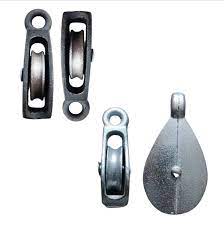
How do small pulleys impact the performance of hobbyist and craft tools?
Small pulleys play a significant role in influencing the performance of hobbyist and craft tools. The proper selection and use of pulleys can affect various aspects of tool performance, including speed, torque, precision, and overall functionality. Here is a detailed explanation of how small pulleys impact the performance of hobbyist and craft tools:
1. Speed Control:
– Small pulleys, when used in conjunction with belts or cables, can be employed to control the speed of rotating components in hobbyist and craft tools. By changing the size ratio between the driving and driven pulleys, different rotational speeds can be achieved. This allows users to adjust the tool’s speed based on the specific task or material being worked on, providing versatility and control.
2. Torque Transmission:
– Pulleys are responsible for transmitting torque from the power source, such as an electric motor, to the tool’s working components. The size and configuration of the pulleys influence the torque output and the force applied to the workpiece. By selecting pulleys with appropriate diameters and groove configurations, hobbyist and craft tools can be optimized to deliver the necessary torque for specific applications, improving efficiency and performance.
3. Power Conversion:
– Small pulleys can be used in systems that convert one type of power or motion into another. For example, hobbyist tools may utilize pulleys in conjunction with gears or other mechanisms to convert rotary motion into linear motion or vice versa. This enables the tool to perform tasks such as cutting, drilling, or sanding with precision and accuracy, enhancing the overall performance and functionality.
4. Belt Tension and Grip:
– Proper belt tension and grip are crucial for the effective operation of hobbyist and craft tools that utilize pulleys. The design and selection of pulleys impact the belt’s engagement and grip on the pulley surface. Well-designed pulleys provide sufficient grip, preventing slippage and ensuring the transmission of power from the driving pulley to the driven pulley. This results in reliable and consistent performance of the tool.
5. Smooth Operation:
– Pulleys, when equipped with appropriate bearings, contribute to the smooth and quiet operation of hobbyist and craft tools. High-quality bearings reduce friction and minimize vibration, resulting in reduced noise levels and improved user experience. Smooth operation enhances precision and control, especially for tasks that require fine detailing or delicate work.
6. System Integration:
– Small pulleys serve as integral components in the overall design and functionality of hobbyist and craft tools. They are often used in conjunction with other mechanisms, such as belts, gears, or linkages, to create a synchronized and efficient system. Proper integration of pulleys ensures smooth coordination and interaction between various components, maximizing the tool’s performance and reliability.
7. Component Sizing and Compactness:
– Small pulleys are particularly beneficial for hobbyist and craft tools where size and compactness are important factors. By utilizing small pulleys, the overall size of the tool can be minimized without compromising performance. This is especially advantageous for handheld or portable tools where weight and maneuverability are critical considerations.
8. Customization and Adaptability:
– Small pulleys offer customization options, allowing hobbyists and crafters to tailor the tool’s performance to their specific needs. By selecting pulleys with different diameters, profiles, or materials, users can optimize the tool for specific applications or materials. This adaptability enhances versatility and expands the range of tasks that can be accomplished using the tool.
Overall, small pulleys have a significant impact on the performance of hobbyist and craft tools. They influence speed control, torque transmission, power conversion, belt tension and grip, smooth operation, system integration, component sizing and compactness, as well as customization and adaptability. By understanding the role of small pulleys and selecting appropriate pulleys for specific applications, hobbyists and crafters can enhance the performance and functionality of their tools, enabling them to achieve desired results with precision and efficiency.
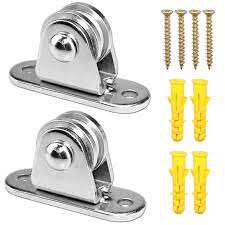
What are the key design features and components of small pulleys?
Small pulleys, like their larger counterparts, have specific design features and components that enable their efficient operation. Here are the key design features and components of small pulleys:
1. Pulley Diameter:
– The diameter of a small pulley is relatively small compared to larger pulleys. It is measured from one edge of the pulley groove to the opposite edge. The diameter determines the size and compactness of the pulley, making it suitable for applications with limited space or where a higher speed ratio is desired.
2. Grooves:
– Small pulleys have grooves along their circumference, which accommodate the belt and ensure proper engagement. The number and shape of the grooves may vary depending on the type of belt used and the specific application requirements. Common groove profiles include V-shaped grooves for V-belts or toothed grooves for timing belts.
3. Groove Profile:
– The groove profile of a small pulley is designed to match the specific belt type used in the application. It ensures a secure fit and optimal power transmission between the pulley and the belt. Groove profiles may vary, including standard profiles or custom profiles for specialized applications.
4. Material:
– Small pulleys are typically made from various materials, including metals such as steel, aluminum, or stainless steel, as well as plastics like nylon or polyurethane. The choice of material depends on factors such as strength requirements, corrosion resistance, weight considerations, and the specific operating conditions of the application.
5. Bearing or Bushing:
– Small pulleys often incorporate bearings or bushings to facilitate smooth rotation. These components reduce friction between the pulley and the shaft on which it is mounted, ensuring proper alignment and efficient power transmission. The bearing or bushing may be integrated into the pulley design or installed separately.
6. Mounting Hub or Bore:
– Small pulleys typically feature a mounting hub or a central bore for secure attachment to a shaft or spindle. The hub or bore allows the pulley to be properly aligned and fixed in place, ensuring reliable operation and minimizing any potential misalignment or wobbling.
7. Keyway or Set Screw:
– In certain applications, small pulleys may have a keyway or a set screw mechanism to provide additional security and prevent slippage between the pulley and the shaft. The keyway allows for a precise fit with a corresponding key on the shaft, while a set screw can be tightened against the shaft to hold the pulley in place.
8. Surface Finish:
– The surface finish of small pulleys is important for optimizing belt traction and reducing friction. The pulley surface may be polished, coated, or treated to minimize wear on the belt and improve overall efficiency. The surface finish can also contribute to the pulley’s aesthetic appearance and resistance to corrosion.
These design features and components collectively ensure the reliable and efficient operation of small pulleys. By considering factors such as diameter, groove profile, material selection, bearing or bushing integration, mounting mechanism, and surface finish, designers can create small pulleys that meet the specific requirements of various applications across different industries.


editor by CX
2024-04-30
